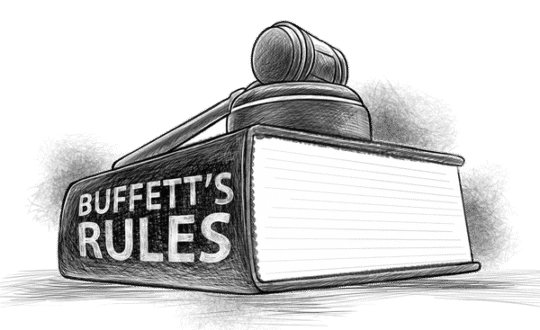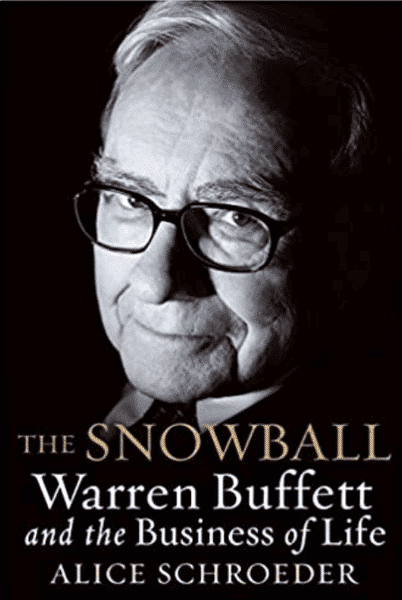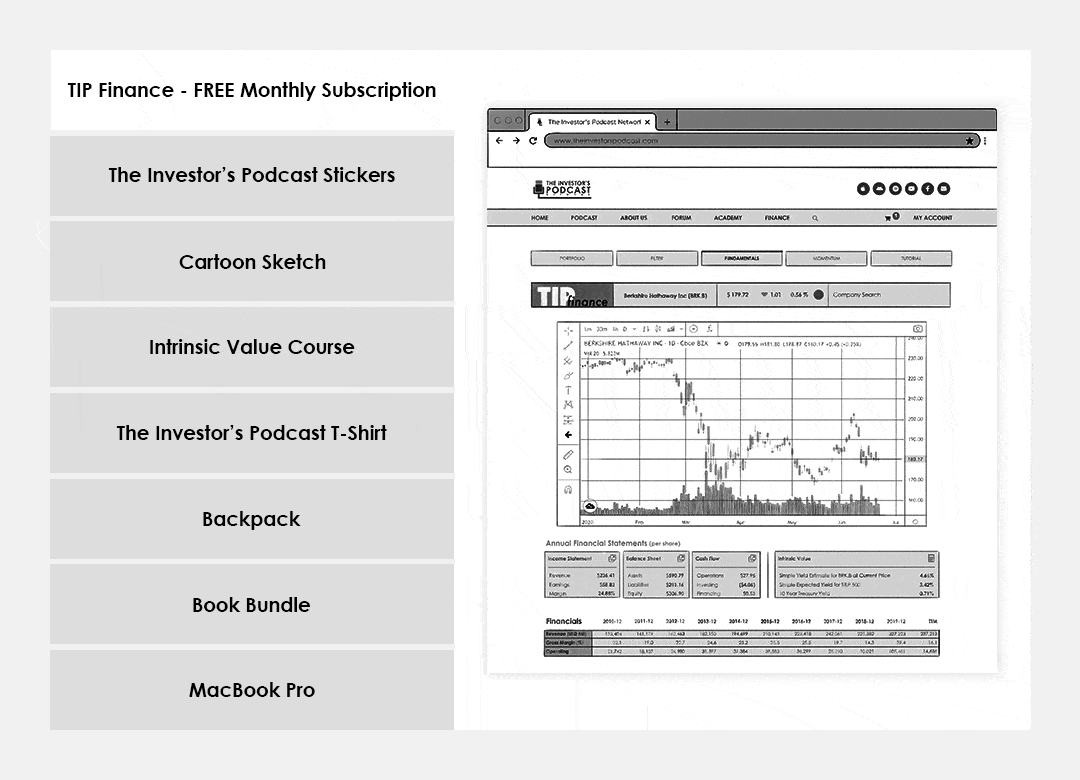The Snowball
18 October 2022

Hi, The Investor’s Podcast Network Community!
Welcome back to We Study Markets!
📈 U.S. stocks rallied for a second day as a combination of better-than-expected earnings and some relief in the U.K. bond markets raised investors’ confidence.
🎬 Netflix reversed customer losses and provided a slightly more bullish outlook than Wall Street was expecting. The company projects a new ad-supported streaming option could help attract 4.5 million subscribers by the end of the year.
Netflix shares jumped 14% in after-hours trading on Tuesday to $275.45. The company’s stock had fallen nearly 60% this year before the earnings report.
Here’s the today’s market rundown:

*All prices as of market close at 4pm EST
Today, we’ll discuss cash draining out of China’s capital markets, Republican optimism at mid-terms, safe-haven stocks not performing as expected, and go deeper into studying the life and investment philosophy of Warren Buffett.
All this, and more, in just 5 minutes to read.
Let’s do it! ⬇️
Understand the financial markets
in just a few minutes.
Get the daily email that makes understanding the financial markets
easy and enjoyable, for free.
IN THE NEWS
💪 Strong Dollar Tests China’s Capital Controls (Reuters)
Explained:
- Cash is draining out China’s financial markets at a record clip, as investors exodus the country’s weakening currency and sputtering economy. And analysts are further speculating that some are using hidden back channels to shuttle even more money out of the country than is being reported.
- These outflows, largely in the Chinese bond market, are attributable to higher interest rates elsewhere around the world.
- Wealth manager Liu Yuan said, “everyone is suffering from the storm of U.S. interest rate rises…U.S. dollar assets are in the eye of the storm. It’s a haven of breeze and sunshine (while) life is hard on the periphery.”
What to know:
- Official records show that a net $101 billion was withdrawn from Chinese financial accounts in the first half of 2022, while the yuan has depreciated 11% against the dollar this year.
- China is well-known for its strict capital controls, but a considerable $45.2 billion net outflow in the country’s economic balance of payments calculation listed as “errors and omissions” has economists speculating that money is being funneled out via illegal or semi-legal channels
🐘 GOP Seizes Momentum In Battle For Congress (The Hill)
Explained:
- Republicans are growing increasingly optimistic that they will seize majorities in both the House and Senate this November following a series of polls that show strong momentum for the party.
- One Republican operative said, “We do have the wind at our backs headed into the election,” as stubborn inflation numbers weigh on consumer sentiment and approval ratings for Democrats.
What to know:
- President Biden’s approval rating, a traditional mood indicator for midterm elections, remains deeply underwater, with a New York Times poll showing more than 58% of likely voters disapproved of his performance.
- Changing power dynamics in Congress will limit the President’s options on many issues, and investors will be watching to see how this influences the government’s fiscal spending plans.
🚧 Safe Haven Stocks Not Performing As Expected (WSJ)
Explained:
- One of Wall Street’s go-to shields from market turmoil isn’t providing much safety. Utility stocks have been the worst-performing sector in the S&P 500 over the past month with declines of 14%.
- These stocks are normally thought to be bastions of stability due to their monopolistic business models and fundamental importance even during economic downturns. While this was true earlier in 2022, that trade seems to be unraveling.
- For the year still, utilities have fallen less than the broader market (11% versus 23%), but the recent weakness is raising concerns about whether that outperformance can hold through the rest of the year.
What to know:
- Utility stocks typically attract investors with their sizable dividends, but as interest rates rise dramatically, these yields are comparatively less attractive since investors can earn similar returns just by owning government bonds.
- The 10-year Treasury bond, for example, offered a yield in excess of 4% yesterday, whereas the S&P 500 utilities sector sports a dividend yield of just 3.3%. For many, this is a sign that the stocks are still too expensive.
- Kevin Barry, chief investment officer at Summit Financial, says, “the 10-year is repricing everything. I’ve got something that’s even safer and yields even more.”
BROUGHT TO YOU BY
Enjoy the ups and downs of roller coasters, but not when it comes to your money?
Learn how passive real estate investing can give you the enjoyment of a roller coaster ride without all the ups and downs.
DIVE DEEPER: THE SNOWBALL
If you want to be a great writer, you study the world’s best writers. If you want to be a great musician, you study the styles of the world’s greatest musicians. And if you want to be a great investor, it’s a good idea to study the life and thoughts of the world’s greatest investor — Warren Buffett.
Our own Clay Finck made it easy for us and discussed his key takeaways on Buffett’s career in his two-part series on We Study Billionaires. Part 2 was released yesterday, and we sat down for a listen. We’d recommend also checking out Part 1 of Clay’s discussion or reading our review here.
Berkshire Hathaway
Part 1 covered the Oracle of Omaha’s early years, and we pick up his story as Buffett begins buying shares of a failing textile maker called Berkshire Hathaway. The company was based in Massachusetts and trading at around $7.50 when Buffett started buying it.
He figured the company’s assets were worth around $19 per share if the company was liquidated, which is what he intended to do. Instead, he ended up owning the entire company, became its CEO, and turned it into one of the greatest capital compounders of all time.
Two Rules
In the late 60s, high-flying technology stocks such as Polaroid and Xerox were making big returns. Buffett made two rules at that time:
- He would not invest in technology that was over his head.
- He would only invest in companies that did not require much of his time, even if they offered tremendous profit opportunities. As he said, he wanted to limit himself to activities that were “easy, safe, profitable, and pleasant.”
The Buffett Partnership
In the early 1970s, Buffett decided to wind up his investment partnership. Unable to find deals that met his investment criteria and worried that he couldn’t produce the returns his investors had come to expect, he closed the partnership down.
After 13 years, he had $100 million of assets under management and had achieved an annualized growth rate of 31% without a single losing year. Buffett was worth $26.5 million at the time.
Buffett always wanted what was best for his investors and treated them like equal partners or even family. He was fully transparent in his communications with them and explained his performance, strategy, and what they should do with their money once the partnership was liquidated. As those of you know who have read them, Buffett’s partnership letters contain a wealth of investment wisdom.
The Inflationary 70s
Despite having “retired” from managing money on behalf of others, Buffett was still doing what he loved to do — analyzing companies he could buy on the cheap.
Through the inflationary 70s, stocks got pummeled. Buffett believed that owning stocks in companies with strong pricing power was the best protection against inflation, which was then running in the double digits.
Investors flocked to gold, diamonds, art, real estate, and commodities to preserve their purchasing power. Everyone thought “cash is trash,” and Business Week announced “The Death of Equities” in an article.
Meanwhile, with everyone avoiding them, Buffett wrote that it was time for investors to buy equities. Many of his own holdings were down as much as 25%, but there was blood in the streets, and he started buying Berkshire Hathaway shares until he ran out of cash. Buffett remained calm throughout the downturn and believed Mr. Market’s opinion of a stock’s price had no bearing on its intrinsic value.
The Snowball
By 1977, Buffett’s empire had ballooned to over $500 million. He controlled half of Berkshire Hathaway and 65% of a company called Blue Chip, and together they controlled ownership stakes in National Indemnity, Rockford Bank, See’s Candy, West, 10% of the Washington Post, 25% of Pinkerton’s detective agency, and 15% of Geico.
As Alice Schroeder put it in her book, The Snowball, “the great engine of compounding worked as a servant on his behalf, at exponential speed and under the gathering approval of a public gaze. The method was the same: estimate an investment’s intrinsic value, handicap its risk, buy using a margin of safety, concentrate, stay in the circle of competence, and let it roll as compounding did the work.”
The Roaring 80s
Paul Volcker, the new Federal Reserve chairman, raised interest rates to 14% by the early 80s to get inflation under control. In 1981, President Reagan implemented tax cuts and started deregulating businesses. A bull market kicked in as prices of stocks started catching up with the growth in corporate earnings.
In 1983, Berkshire bought out Blue Chip, which made Buffett and Charlie Munger full partners for the first time. Munger controlled 2% of Berkshire stock and became the company’s vice chairman. Both took the job of stewarding other people’s capital extremely seriously.
Buffett was a big fan of media companies and, in 1985, spent $517 million for 15% of the television company Cap Cities. At the time, this made him part of the biggest media deal in history.
In that same week of 1985, Buffett yielded a $332 million profit from a single stock, General Foods, after Phillip Morris took it over. At this time, he crossed the billionaire threshold at 55, a title held by only 14 people, according to Forbes.
Buffett’s star continued to rise, and he became the subject of more media coverage upon hitting billionaire status. Berkshire’s stock price, which he originally purchased for $7.50, was now trading at $2000 per share and up 26,000%.
Coca-Cola
On October 19, 1987, markets worldwide dropped by 20% or more in a single day. Buffett loved the moat the brand of Coca-Cola had established, but for years he considered the stock too expensive, at least until now.
He felt the market had overreacted to the headwinds the company faced and loved the waterfall of cash the company produced. Buffett took advantage of the market correction and purchased 14 million shares of Coca-Cola for $600 million.
Soon, the Berkshire stake in the company doubled to $1.2 billion. Other investors piggybacked off Buffett’s moves, and at one point, there was so much demand for the stock that the New York Stock Exchange had to halt trading temporarily.
Coke pays Berkshire $672 million in dividends per year from a quarterly dividend of 44 cents, which has doubled since 1995.
Buffett once said, “I try to invest in businesses that are so wonderful that an idiot can run them. Because sooner or later, one will.” Coca-cola is an example of such a business with an iconic brand that practically sells itself.

What’s next?
This brings us up only to the late 80s, and there is much more to the story of the making of this great American capitalist.
Check out Part 1 and Part 2 of Clay’s outstanding review of Warren Buffett for more in-depth analysis.
And also, be on the lookout for tomorrow’s edition of We Study Markets, as we’ll discuss the remaining 30 years of Buffett’s career.
Finally, if you really want to binge on the Oracle of Omaha’s wit and wisdom, we compiled 92 of his greatest quotes in honor of his 92nd birthday.
SEE YOU NEXT TIME!

That’s it for today on We Study Markets!
See you later!
If you enjoyed the newsletter, keep an eye on your inbox for them on weekdays around 6pm EST, and if you have any feedback or topics you’d like us to discuss, simply respond to this email.











